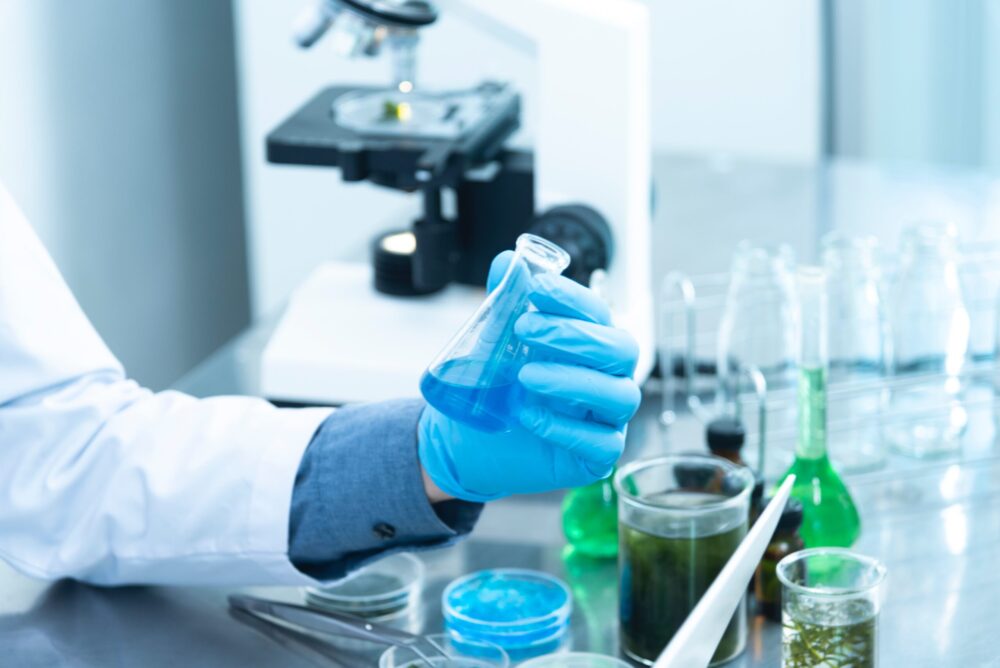Is Gluconeogenesis Catabolic Or Anabolic?
What is Catabolism?
Catabolism is a natural process in which cells break down organic compounds in order to release energy. It processes proteins, lipids, nucleic acids, and polysaccharides and usually involves multiple steps. These processes are regulated by hormones and enzymes. If there are imbalances in either of these, they can lead to problems with the metabolic system.
Catabolism is vital to the functioning of your body and is necessary for sustaining your energy levels. It provides energy for various cellular processes and body movements. It breaks down complex molecules like proteins, glucose, and lipids into smaller, simpler ones. Some of these simpler molecules are then used as building blocks for other cellular processes, while others are used as waste products.
The breakdown of large organic molecules results in the production of smaller molecules called amino acids. Some of these amino acids are used as substrates for further molecular development, while others are used as energy sources for cells. Catabolic reactions also release energy from chemical bonds. However, it is important to note that the energy released is less than the total energy of the molecule.
Proteins are made up of 20 amino acids, which are similar in animals, plants, and bacteria. When protein is broken down in a smaller organism, it must be digested by enzymes called proteinases, which break down the bonds between amino acids. The amino acids are then distributed to the body’s cells, where they can be recombined to create new proteins.
What is Anabolism?
The first step in the metabolic process is digestion, which breaks down large molecules into simpler ones that can be used as raw material or energy by the body. In addition to using the nutrients we ingest, digestion releases energy from degraded materials through the production of ATP molecules. These molecules are brought into cells, where they break down into even simpler ones and release energy.
The second part of metabolism, called catabolism, is the production of complex molecules from simpler ones. This occurs in the body as proteins, fatty acids, and glucose are produced. These substances can then be stored in the body for energy or used for the next step in the metabolic process. Anabolism also breaks down oxidized compounds.
The third step in the metabolic process, known as biosynthesis, uses energy from catabolism to create complex molecules. These compounds are used to build organs and tissues. Anabolism has three basic stages: stage one involves the synthesis of amino acids, stage two involves the synthesis of monosaccharides, and stage three involves the assembly of these precursors into complex molecules. Different species of organisms use different energy sources for these reactions. Autotrophs, for instance, construct complex organic molecules from simple molecules.
Anabolism is a constructive process in the body, where complex molecules are created using energy. Catabolism, on the other hand, breaks down large molecules into smaller ones and releases energy. These processes are the main mechanisms of metabolism, and help the body build stronger tissues and muscles.
Gluconeogenesis
Gluconeogenesis is a process that takes place in several different organs of the body, including the liver, intestine, muscle, brain, and heart. Each organ uses a unique set of precursor molecules and reactions. The process begins in the mitochondria and cytoplasm of the cell. An enzyme called pyruvate carboxylase then catalyzes the degradation of oxaloacetate to malate, which is transported outside of the mitochondria.
The process involves converting glucose into energy. The energy that is used in glycolysis is used to produce gluconeogenesis. Most of the enzymes involved in gluconeogenesis are located in the cytosol, except for mitochondrial pyruvate carboxylase and phosphoenolpyruvate carboxykinase (PEPCK), which are found in both the cytosol and the mitochondrion. Gluconeogenesis also involves fructose-1,6-bisphosphatase, which is regulated by signal transduction.
Gluconeogenesis can be anabolic or catabolic depending on how it is carried out. The process produces glucose from non-carbohydrate carbon sources, mainly fats and proteins. In addition, it serves as one of the two primary mechanisms for maintaining normal blood sugar levels. If insulin is not present, glucoseconeogenesis may not be suppressed, which can result in hyperglycemia and other health problems.
The process of glucose synthesization is important because the body needs the energy to function. Glucose is necessary for the survival of organisms. When fasting, organisms use glucose to fuel many processes. The testes, the kidneys, the cornea, and the erythrocytes depend on glucose as their primary fuel source. Moreover, ketone bodies are used by the brain to replace up to 20% of its glucose requirement.
The main difference between anabolic and catabolic metabolism is the way energy is used in these two processes. Catabolism is a breakdown of simple molecules such as glucose, while anabolism builds complex molecules from simpler ones. The energy needed for anabolism must balance the energy input from the catabolic process.
Photosynthetic carbohydrate synthesis
The process of carbohydrate synthesis involves the conversion of light energy into sugar molecules. The reactions are catabolic or anabolic depending on the type of carbohydrates involved. In catabolic reactions, the substrates are small, simple molecules, such as amino acids and monosaccharides. In anabolic reactions, reducing agents, such as hydrogen and oxygen, carry electrons and stabilize functional groups.
Photosynthesis requires energy, primarily sunlight. The result is a high-energy molecule called ATP, which is the primary energy currency of all cells. Cells use ATP molecules to store sugar (glucose) in the form of glycogen and starch. These energy-storing polymers are broken down to release glucose, which is then used to fuel cells.
Plant leaves produce excess carbohydrates during the process of photosynthesis, which are transported to other parts of the plant. Most plants store these carbohydrates as starch, while others use them as primary energy stores. Sucrose and starch synthesis occurs in different cellular compartments, coordinated by a variety of regulatory mechanisms.
Green plants have special enzymatic machinery that converts CO2 into simple organic compounds, or carbon fixation. These compounds are precursors to more complex biomolecules. The metabolic pathways of green plants are similar to those of animal tissues. The process produces sugars, polysaccharides, and metabolites.
Reductive assimilation of CO2 requires a lot of ATP and NADPH. This process involves the activation of four Calvin cycle enzymes. ATP and NADPH are produced in a light-dependent manner by reducing disulfide bonds. Ferredoxin-thioredoxin-reductase catalyzes this process.
Nonenzymatic gluconeogenesis
The thermodynamic laws of thermochemistry allow us to understand how nonenzymatic gluconeogenesis occurs. The non-enzymatic pathway of glucose metabolism involves two steps. First, oxaloacetate is decarboxylated and phosphorylated to form phosphoenolpyruvate. The second step involves the catalytic enzyme PEPCK, which phosphorylates GTP to GDP. The third step is the formation of fructose 1-phosphate, which is subsequently converted to fructose 6-phosphate.
The enzymes responsible for gluconeogenesis are located mainly in the cytosol. The exceptions are mitochondrial pyruvate carboxylase and phosphoenolpyruvate carboxykinase, which exist as isozymes in both mitochondria and cytosol. The pathway also involves fructose-1,6-bisphosphatase, a catalytic enzyme that is regulated through signal transduction.
Gluconeogenesis is the process of breaking down food into simpler molecules for energy. This process occurs in the digestive tract. Glycolysis is the opposite of gluconeogenesis and occurs when large complex molecules are broken down into smaller, simpler molecules. An understanding of how these processes work can help you lose fat and build muscle. Both processes require energy and are controlled by hormones.
The glyoxylate cycle is not well established in humans. In the absence of a glyoxylate cycle, fatty acids stored in adipose tissue cannot be converted directly to glucose. Instead, fatty acids are broken down by the liver to produce ketone bodies. Bacteria and plants convert fatty acids into glucose through the glyoxylate cycle, which bypasses the decarboxylation step of the citric acid cycle.
Hexose-phosphates produced during gluconeogenesis
Gluconeogenesis is the process by which the liver makes new glucose molecules. This process takes place during low-glucose conditions, such as fasting, starvation, and low-carbohydrate diets. Glucose is the primary energy source for many key organs and systems in the body. During low-glucose conditions, the liver is able to synthesize glucose using simple materials.
The two main sugars that enter the glycolytic pathway are glucose and fructose. Fructose is metabolized inside the cell while galactose is converted into glucose to undergo catabolism. The glycolysis pathway produces two molecules of ATP and NADH from glucose and two molecules of pyruvate that can be oxidized in the citric acid cycle.
Hepatic gluconeogenesis is regulated by a specialized enzyme called PP1. PP1 activates glycogen synthase and inhibits glycogenolysis through glycogen phosphorylation.
Hexose-phosphates are an important part of the metabolism in animals and humans. Pyruvate is the precursor of alanine. When NAD+ levels are low, pyruvate is converted into acetyl-CoA. It is also converted into oxaloacetate in the mitochondrion. This process also requires the presence of NADH, a critical nutrient for glycolysis.
The gluconeogenesis process is catabolic when it occurs in the liver, but it is not catabolic in the absence of a catabolic enzyme. Gluconeogenesis is a highly complex process and a number of nutrient-deficient individuals have the disorder Tauri disease.
During glycolysis, a pair of enzymes, F6P and glucose-6-phosphate isomerases, convert glucose to fructose-1,6-bisphosphate, and phosphofructokinase, a molecule that adds phosphate to fructose. In addition, G6P acts as a feedback inhibitor of hexokinase.
Glucagon-induced gluconeogenesis
The first step to understand if glucagon-induced gluconeosynthesis is anabolic or catabolic is to look at the signaling pathways involved. In the absence of insulin, the glucagon signaling module is largely inactive, as cAMP degradation and insulin signaling are inhibited. However, when the levels of insulin and AA are high, the insulin signaling module is activated and glucagon secretion is increased.
Glucagon activates hepatic gluconeogenesis by converting non-hexose substrates into glucose, which provides another source of blood glucose. This is particularly important in animals that do not absorb much glucose from the intestine. Glucagon also enhances the lipolysis of triglyceride in adipose tissue, which is an additional means of conserving blood glucose.
In addition, dietary fatty acids inhibit the insulin signaling pathway, and amino acids have an inhibitory effect on the glucagon signaling pathway. Fatty acids also increase the amount of cAMP, which is an important signaling pathway in regulating insulin and glucagon levels. Increasing fatty acid levels may increase gluconeogenesis, but this may lead to a catabolic state.
The insulin-glucagon signaling network is composed of multiple crosstalk and feedback interactions. These interactions determine metabolic homeostasis and disease states. In our study, we analyzed the steady-state response to various inputs and structural perturbations in the signaling network.
Glucagon immunoneutralization normalized plasma amino acid levels in critically ill mice, but immunoneutralization did not affect survival or hepatic glycogen content. In contrast, immunoneutralizing glucagon significantly elevated plasma levels of amino acid catabolic enzymes, although it had no effect on muscle weight.
Conclusion
Gluconeogenesis is a process in which the kidneys and liver create glucose from non-carbohydrate sources. Gluconeogenesis is the opposite of catabolism, in which the food molecules are broken down for energy. Gluconeogenesis uses pyruvate carboxylase, an enzyme that uses ATP and biotin to produce glucose. This process can be catabolic or anabolic depending on the amount of energy input.
The liver, kidney, and intestine are the main organs involved in gluconeogenesis. Each organ uses a different precursor molecule to produce glucose. The kidneys, for example, start with lactate and glycerol. Gluconeogenesis then proceeds in the mitochondria, where oxaloacetate is reduced to malate and glucose.
Both glucose and pyruvate can be obtained from carbohydrates, such as starch. However, if an organism does not consume enough energy, it will not be able to function. Thus, organisms evolved to produce substrates other than carbohydrates. This includes gluconeogenesis, a process that converts pyruvate to glucose, which is a key component of life.
Gluconeogenesis is a critical process in the body, as it regulates amino acid metabolism and acid-base balance. It also regulates glycolysis, a process that breaks down glucose to supply cells with energy. Insulin inhibits gluconeogenesis but does not suppress it when the insulin signaling system is compromised. This can cause hyperglycemia.



